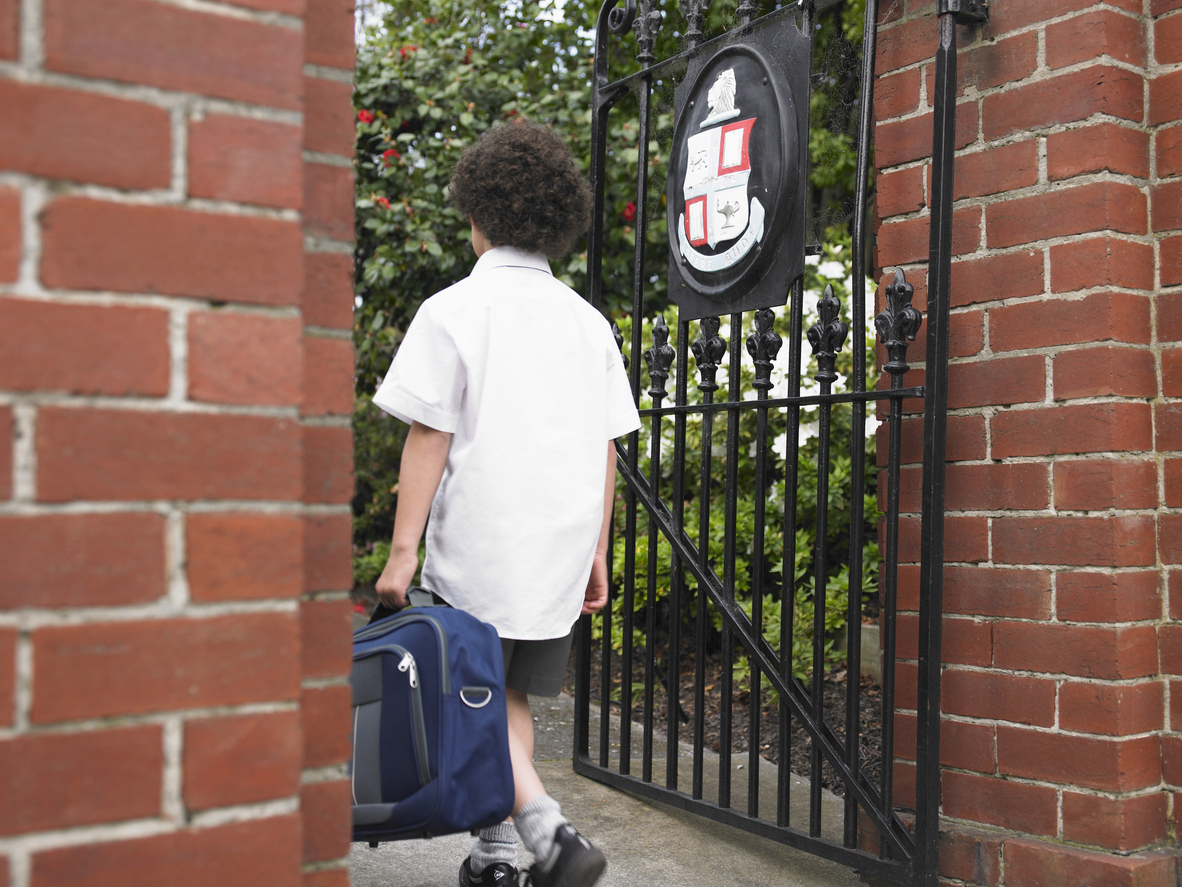
What is emotionally-based school avoidance (EBSA)?
Learn about the factors that contribute to school avoidance in young people in this introduction by Thomas Owoo.
When I first started working in education 20 years ago, I can remember a pupil who was regularly absent, and the parents were struggling to get them into school. In meetings with other staff, we would describe the pupil as a ‘school refuser’. The word ‘refuser’ had powerful, often negative, implications for understanding the situation and subsequently the support that was provided to the pupil. The term implied that the pupil was actively choosing not to attend school and placed an emphasis and unconscious judgement on their apparent poor behaviour. The term did not encourage us staff to be curious about the underlying thoughts and feelings that were resulting in the pupil’s absenteeism.
A brief history
In 2014, the Special Educational Needs and Disabilities (SEND) Code of Practice introduced the term ‘social, emotional and mental health (SEMH)’. This replaced the terms ‘behavioural, emotional and social difficulties’ and ‘emotional and behavioural difficulties’. The new abbreviation, SEMH, was the first term to drop the word ‘behaviour’, in an attempt to emphasise that behaviour is a way of communicating underlying barriers and difficulties. This marked a turning point in understanding the behaviour of absenteeism and helped us understand the term emotionally-based school avoidance (EBSA) which we use today.
This move also encouraged schools to view regular absenteeism as a potential emotional, mental health or wellbeing difficulty, something that should be explored before implementing sanctions for non-attendance. This is a message that has been reiterated in the Education Committee’s report on persistent absence and support for disadvantaged pupils, which states that mental health difficulties should be a valid reason for pupils to miss school, with fines aimed at parents being a “last resort”.
Anxiety is often the emotion that is considered as part of EBSA, and is often linked to school avoidance. The pupil may experience anxious and fearful thoughts around attending school and their ability to cope with the perceived demands to engage or perform. These feelings may be accompanied by physiological symptoms of anxiety such as nausea, vomiting, shaking, sweating and even start days before having to go to school.

Is emotionally-based school avoidance on the rise?
British psychotherapist and author, Philippa Perry, wrote in an article in the Guardian stating, “Not Fine in School is a support group for families with children who find it hard or impossible to attend school. It launched in 2018 with 100 members. Post lockdown, they now have more than 30,000”.
The government’s Education Committee published a report on persistent absence and support for disadvantaged pupils, which states:
“The most recent full-year statistics (for 2021/22) showed an overall absence rate of 7.6%, up from around 4-5% before the pandemic. In that [pandemic] year, 22.5% of pupils were persistently absent, meaning they missed 10% or more of school sessions – around double the pre-pandemic rate. 1.7% of all pupils were severely absent, meaning they missed more than half of sessions, compared to less than 1% pre-pandemic.”
In response, the Education Committee Chair Robin Walker MP said “The increase in children suffering from mental health problems is deeply troubling and it is evident that our health service can’t meet this growing demand, leaving schools to fill the gaps.
A major cross-government review of how to overcome this challenge is needed and greater resources both inside and outside schools will be required”.
What factors lead to emotionally-based school avoidance?
There are a range of factors, including school, family, friends and the post-pandemic recovery, that can contribute towards the experience of emotionally based school avoidance.
In 1990, Christopher Kearney and Wendy Silverman wrote a paper on the subject which suggested four main reasons for school avoidance. Although we no longer use the term ‘school refusal’, the factors they identified are still helpful considerations:
- to avoid uncomfortable feelings brought on by attending school, such as feelings of anxiety or low mood
- to avoid situations that might be stressful, such as academic demands, social pressures and/or aspects of the school environment
- to reduce separation anxiety or to gain attention from significant others, such as parents or other family members
- to pursue tangible reinforces outside of school, such as going shopping or playing computer games during school time.
EBSA is highly complex, has many different aspects and causes, and there could be a range of contributing and intersecting factors in play at any one time. Nevertheless, thinking about the four reasons above can help staff explore each factor and how it may be contributing to potential problems.
Once the underlying reasons behind school avoidance have been discovered, a network of tailored support for the pupil can be implemented to reduce the emotional barriers and increase the incentive to return to school. The training provided by Gloucester House Outreach Service explores these themes in further depth, as well as the possible interventions that you could consider implementing to address them.

Where to begin?
The SEND Code of Practice makes it clear that the views of pupils are paramount at every stage of the SEND graduated approach. Social, emotional and mental health, which EBSA falls under, forms one of the categories within this code of practice. Therefore, to address an individual’s EBSA, we must find ways to gather a pupil’s voice and the underlying reasons for the school avoidance.
In my role as an Advisory Teacher, a regular challenge that I’ve seen staff experiencing is that they are unable to identify the reasons for the pupil’s absenteeism, despite their best endeavours. Pupils may often find it hard to communicate and express their thoughts and feelings, leaving staff feeling “stuck”.
At Gloucester House Outreach Service, we have recognised this issue and offer EBSA training to help staff explore how they can gather a pupil’s thoughts and feelings. A range of creative and non-verbal strategies can be effective in this exercise, by reducing the perceived demand on the pupil to talk and increasing the chance of gathering insights into the way the pupil is perceiving the world around them. Staff can then learn what is required to generate an appropriate plan of support.
Reframing, reflecting and responding to the challenges of EBSA
As I write this blog, I think back to the pupil from 20 years ago that had been labelled as a “school refuser”. Helping the staff reconsider that school avoidance was not as simple as a pupil just refusing to attend school began a change in thoughts and feelings. I am sure it was not a novel concept, but I used to ask members of staff to consider both the “fruits”and “roots”of children’s behaviour. I would point out to my colleagues that they would be describing the “fruits”, but invite them to consider the “root” reasons for why the pupil was displaying challenging behaviours.
I chuckle to myself and see that I was trying to find a visual way to illustrate the “presentation”vs “unconscious”, or the “seen”vs “unseen” which derives from a psychodynamic approach. Often we are drawn to the surface level of behaviour (in this case being absent from school) and find it difficult to be curious about the deeper underlying factors that are at play. We often fail to appreciate that this behaviour is not simply a child or young person’s “choice”but possibly a coping mechanism for underlying issues. These issues are not always resolvable between the child and their parent/carer, but can require a wider network of support from professionals.
Sometimes people are curious about the underlying factors behind school avoidance but do not feel equipped with the tools to discover what underlying factors are at play. Addressing the behaviour head on with a question such as “Why do you not want to come to school?” often results in a typical response of a lowering of the head, a shrug and a monotone response “I dunno”. Therefore, creatively having the tools to gather the views of the child are paramount to slowly achieving our goal – in my case, getting the pupil from 20 years ago back into school. After all, how can you help if you are unable to uncover the roots of the emotionally-based school avoidance?
In the training that we deliver, we explore creative ways to capture the pupil’s voice. For example, the ‘Drawing the ideal school technique’ can be used to elicit children’s important or core constructs about themselves and how they view the world in a visual way. Drawing pictures in response to given prompts can help gather insight about a child’s needs without a demand on the child to talk.
Another non-verbal, visual activity is the use of EBSA risk and resilience cards. These help children externalise behavior by ranking cards that they associate with to help professionals uncover the possible risks and functions of their EBSA. Ranking other cards that highlight environmental or sensory support can guide professionals on towards personalised strategies that can help build the resilience in the child to cope with their EBSA. Ultimately, this interactive card sorting activity creates a low demand as the pupil does not have to come up with ideas or put forward verbal thoughts, just respond to images and ideas that resonate with them and move them around.
These resources can also help spark conversations and elicit a child’s view of the world. Through this we can start to make sense of the factors contributing to EBSA and develop the foundations of an effective support plan.
Creating a personalised, coordinated plan
Gathering a pupil’s voice is essential to creating a personalised and coordinated plan. Below I’ve suggested some things to consider when developing your own:
- A range of factors can be at the root of EBSA and they all have to be addressed simultaneously with a coordinated plan of support and regular ‘assess, plan do, review’ cycles.
- The plan needs to be broken down into very small steps and always negotiated with parent/carer and pupil.
- Using a personalised Mapping Landscape of School (also known as Landscape of Fear) resource – similar to CBT’s systematic desensitisation approach – will play a big part in developing the hierarchy of steps for a pupil so they feel in control and not overwhelmed with the fear response.
- Professionals might need to do most of this work in the home and be open to having much lower expectations for attendance to school increasing quickly.
- A range of professionals need to be involved and allocating all the work to one staff member should be avoided.
In summary, a team approach is required for supporting a child with EBSA. Yes, there will be a key-worker(s) that will be tasked to building, maintaining or establishing a rapport with the child and providing support throughout the process. However, other professionals must be involved in coordinating and overseeing the plan. The plan must take a child-centered approach, focusing on meeting the child’s needs and their perceived reasons for school avoidance.
Finally, although it may be easier said than done, professionals should avoid being driven by external pressures such as meeting targets, improving attendance data and adhering to attendance and behaviour policies. Instead, by focusing on the child, the ultimate aim will eventually come into fruition.

Interested in learning more?
Join our workshop to explore how creative strategies can engage children and young people experiencing EBSA, and to find out how you can implement a personalised plan that reduces anxiety and increases school attendance.


